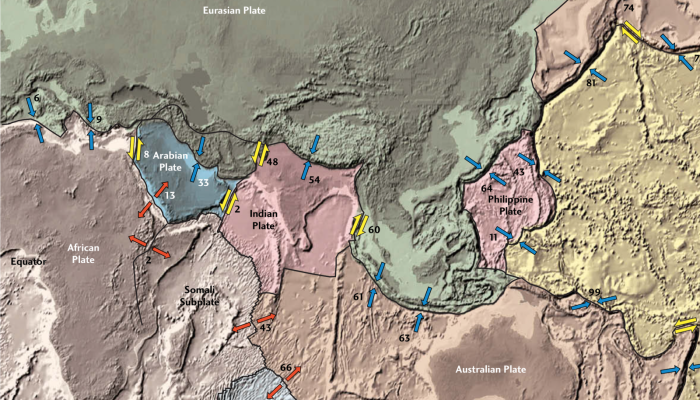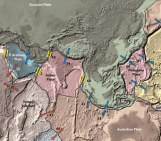
The sixties brought us many moving moments: Woodstock, the civil rights movement, the moon landing… and the establishment of the plate tectonic theory.

Tectonic Smile – Credit: Google Earth
It is during the turbulent late sixties that scientists published groundbreaking manuscripts proving that pieces of the Earth’s outer layer are in a constant state of motion.
In Late 1967 to mid-1968, Dan McKenzie and Robert L. Parker, Jason Morgan and Xavier Le Pichon, amongst others, showed that crustal motions on Earth approximate rigid body rotations on a sphere and that plates conforming the Earth’s upper layer have rates of motion that can be calculated thanks to paleomagnetic data. Five decades have passed since the advent of the plate tectonics theory, and it might take many more decades to fully understand all its implications.
Here, at the Tectonics and Structural Geology ECS-team, we can’t help but wonder where are we standing today, what the biggest achievements have been and which aspects of the plate tectonic theory still escape our understanding. Fortunately, a commemorative conference celebrating the 50 anniversary of plate tectonics, held in Paris in June 2018 under the title “Plate tectonics: Then, Now & Beyond,” provided a unique opportunity to seek for answers. Initiator David Fernández-Blanco made his way to Paris and together with Anouk Beniest interviewed several researchers that greatly contributed and still contribute to the plate tectonics theory. This blog series presents a total of 17 interviews with these outstanding researchers. ECS have so much to learn from them!
Find the interviews here:


